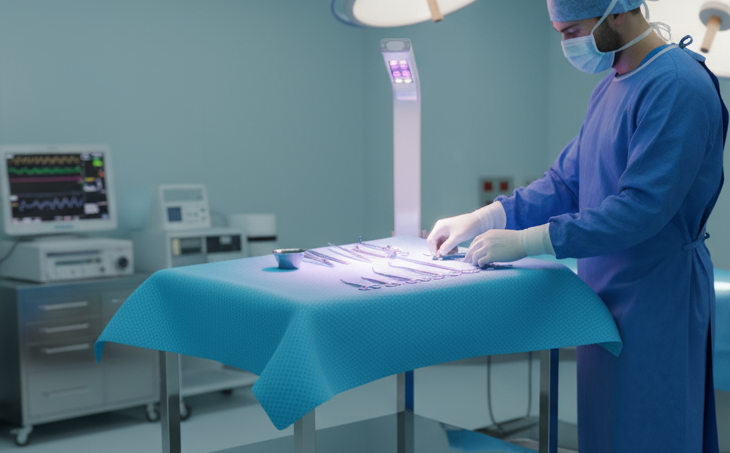2 min read
Dr. Joseph Lister: The Pioneer of Antiseptic Practices in Healthcare
Emilie Hage Mogensen
:
17 Sep, 2024

Dr. Joseph Lister revolutionized surgery by introducing antiseptics to fight infections, transforming patient outcomes and laying the foundation upon which modern healthcare practices are built. Today, his legacy continues with modern technologies like Far-UVC, which offer a new, safe method for killing airborne microorganisms during surgery.
The Invisible Enemy in the Air
The mid-19th century posed grim outcomes for surgical patients, largely due to postoperative infections. Dr. Joseph Lister, however, was intrigued by the pioneering work of the chemist Louis Pasteur, who had recently demonstrated that juice and milk could be better preserved by protecting them from exposure to air, suggesting that airborne microorganisms were the cause. This idea challenged the prevailing belief in the medical community that microorganisms were generated spontaneously.
Inspired by Pasteur, Lister proposed a revolutionary hypothesis: that surgical wounds could be protected from infections by disinfecting the air in the operating room.
The Foundations of Antiseptic Surgery
To prove his hypothesis, Lister began experimenting with chemical substances to kill microorganisms in wounds. In 1865, he started using carbolic acid, applying carbolic acid-soaked lint to open fracture wounds, and found that the patients remained free of infections. Building on this success, he not only treated wounds but also sought to disinfect the air during surgeries by spraying diluted carbolic acid in the operating room. Lister believed the droplets would kill airborne microorganisms before they could settle in the would and cause infection.
This practice not only improved patient survival rates but also laid the foundational principles of antiseptic surgery. Initially met with scepticism and ridicule, his antiseptic practices faced resistance from a medical community entrenched in traditional — and often unsterilized — surgical methods. Yet, Lister's perseverance and the undeniable efficacy of his methods gradually won over the consensus, transforming the landscape of surgical practices and patient care.
Although aseptic techniques has replaced antiseptic methods in modern healthcare, Lister's principals about keeping wounds clean and free of microorganisms remain vital to surgical practices and patient safety protocols in healthcare facilities worldwide.
Antiseptic Surgery:
Focuses on killing microorganisms before they cause an infection. Antiseptic techniques involve applying chemicals like carbolic acid directly to wounds, surgical instruments, and the air to destroy harmful pathogens.
Aseptic Surgery:
Aims to prevent microorganisms from entering the surgical site in the first place. Aseptic techniques involve sterilizing surgical instruments, using sterile gloves and gowns, and maintaining a sterile environment to minimize the risk of infection.
From Carbolic Acid to Far-UVC
Reflecting on Lister's legacy, it is clear that the quest for innovative antimicrobial solutions and infection control continues to drive progress in healthcare. Despite the widespread application of aseptic practices in modern operating rooms, the air remains continuously contaminated, primarily due to the presence of medical staff.

Carbolic Acid Steam Sprayer - Joseph Lister invention
Today, technologies like Far-UVC light serve as a modern parallel to Lister's use of carbolic acid for air decontamination, offering non-invasive, safe methods for continuous microbial inactivation during surgery. Human-safe Far-UVC technology provides an effective solution that embodies Lister’s legacy of protecting patients during surgical procedures.
 UV222™
UV222™ UV222 Linear
UV222 Linear UV222 Downlight
UV222 Downlight Vertex 222
Vertex 222.png) UV222 Pendant
UV222 Pendant.png) UV222 Booth
UV222 Booth.png) UV222 Step-On
UV222 Step-On.png) UV222 Cleanroom Downlight
UV222 Cleanroom Downlight UV222 Dual Downlight 60x60
UV222 Dual Downlight 60x60 UV222 Material Airlock
UV222 Material Airlock UV222 Ambulance
UV222 Ambulance UV222 Compact
UV222 Compact UV222 Industrial
UV222 Industrial
%20(3)%20(2).png)



.jpg)
.jpg)


